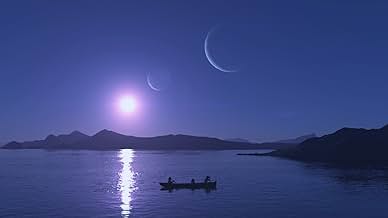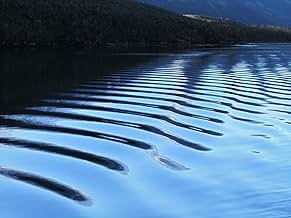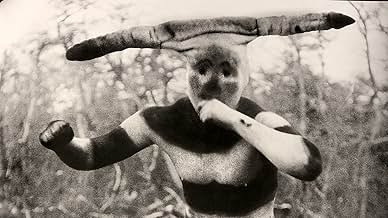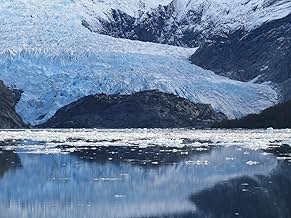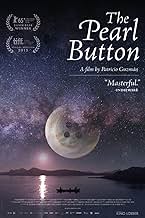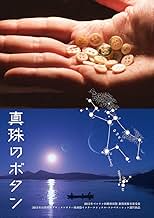NOTE IMDb
7,6/10
3 k
MA NOTE
Plongeant dans la signification quasi religieuse de l'eau, cette profonde réflexion sur la mémoire et la perte comble le fossé entre ses origines mystiques, le coup d'État de Pinochet, et le... Tout lirePlongeant dans la signification quasi religieuse de l'eau, cette profonde réflexion sur la mémoire et la perte comble le fossé entre ses origines mystiques, le coup d'État de Pinochet, et le secret d'un bouton de nacre au fond de la mer.Plongeant dans la signification quasi religieuse de l'eau, cette profonde réflexion sur la mémoire et la perte comble le fossé entre ses origines mystiques, le coup d'État de Pinochet, et le secret d'un bouton de nacre au fond de la mer.
- Récompenses
- 11 victoires et 11 nominations au total
Histoire
Le saviez-vous
- ConnexionsFeatured in The Story of Film: A New Generation (2021)
Commentaire à la une
"The Pearl Button," is the follow up work by renowned Chilean writer/director and documentarian, Patricio Guzman. Much like his mesmerizing 2010 documentary, "Nostalgia for the Light," "The Pearl Button," starts out showcasing the brilliance and natural beauty of the Chilean night sky. Only this time Guzman juxtaposes it against the cool, sensual freshness of the land's natural, cascading waterways. Gently, Guzman shifts gears and slips in interviews with the indigenous Chileans and learns of a cosmic edifying way of life through the eyes of the elder Kawesqars, the ancient water nomads of Patogonia. Romantic stories of 600 mile journeys along the coastal seascape in miniature paddle boats were relived as if they emanated from another time and space that couldn't exist today. And for all intents and purposes, it doesn't, except in the minds and lore of the elder Kawesqars. Due to modern shipping lanes and commercial fishing rights, the boat people are no longer allowed to freely travel. Many younger members would hardly know how. It seems the modern generation is so busy surviving that they have forgotten how to live.
The film comes in at a fast moving eight-two minutes. It is shot in color with minimal color correction that deftly enhances the strong cinematography provided by Katell Djian. Unsurprisingly, the look and feel of the shooting is similar to Nostalgia for the Light, as Djian worked both. Yet, there is more to both films than gorgeous night sky spectacles and rich, ripe waterways or vast, barren deserts. Both films call attention to the brutality of the Pinochet regime. Nostalgia for the Light, provides a beautiful segway into the search for disappeared bodies much like the Chilean government searches the sky for disappeared stars. In "The Pearl Button," Guzman connects the cosmos and the essence of life to water calling to mind that humans ultimately evolved from aquatic life forms. And, the aquatic life forms sprang forth from a cosmic impulse detonated from a massive energetic collision resulting in the first precursor of life, water, entering into the planetary environment. Water is the essence of life. And it remembers.
However, as colonialism began to encroach, a new way of life emerged that was far different that the life the cosmos had revealed. Here Guzman indulges himself in a little Chilean lore of the legend of Jemmy Button. Jemmy Button was the representation of an ordinary indigenous Chilean. He was taken under the protection of a British naval officer in exchange for a fancy pearl button. The officer took Jemmy back to Britain and learned Jemmy the ways of a British gentlemen. Jemmy attended the finest school and was dressed accordingly and even given a respectable haircut. After a year Jemmy was returned to his family and community. He never fit in again and lived the rest of his days as an outsider.
Much can be made of the plight of Jemmy Button as Guzman uncovers and delivers another horrifying example of Pinochet's brutal attack on dissidents. Unnervingly and in a manner akin to a medical coroner, a recreation of how a body, not necessarily a corpse, would be disposed of seemingly without a trace. True to most crimes, however, an error occurred in the process and a body washed a shore eventually revealing another episodic disappearance of dissidents. Most estimates agree that somewhere between 12,000 to 14,000 bodies were disposed into these once life giving waters. Nevertheless, Guzman finds optimism and hope for the future. During reclamation efforts, one of the instruments used to hasten the drowning and to keep the body submerged, was recovered without the typical barnacles attached. It was recovered with a pearl button attached.
Guzman, once again, proves himself a gifted, master storyteller with both earthly and cosmic sensibilities. Highly recommended.
The film comes in at a fast moving eight-two minutes. It is shot in color with minimal color correction that deftly enhances the strong cinematography provided by Katell Djian. Unsurprisingly, the look and feel of the shooting is similar to Nostalgia for the Light, as Djian worked both. Yet, there is more to both films than gorgeous night sky spectacles and rich, ripe waterways or vast, barren deserts. Both films call attention to the brutality of the Pinochet regime. Nostalgia for the Light, provides a beautiful segway into the search for disappeared bodies much like the Chilean government searches the sky for disappeared stars. In "The Pearl Button," Guzman connects the cosmos and the essence of life to water calling to mind that humans ultimately evolved from aquatic life forms. And, the aquatic life forms sprang forth from a cosmic impulse detonated from a massive energetic collision resulting in the first precursor of life, water, entering into the planetary environment. Water is the essence of life. And it remembers.
However, as colonialism began to encroach, a new way of life emerged that was far different that the life the cosmos had revealed. Here Guzman indulges himself in a little Chilean lore of the legend of Jemmy Button. Jemmy Button was the representation of an ordinary indigenous Chilean. He was taken under the protection of a British naval officer in exchange for a fancy pearl button. The officer took Jemmy back to Britain and learned Jemmy the ways of a British gentlemen. Jemmy attended the finest school and was dressed accordingly and even given a respectable haircut. After a year Jemmy was returned to his family and community. He never fit in again and lived the rest of his days as an outsider.
Much can be made of the plight of Jemmy Button as Guzman uncovers and delivers another horrifying example of Pinochet's brutal attack on dissidents. Unnervingly and in a manner akin to a medical coroner, a recreation of how a body, not necessarily a corpse, would be disposed of seemingly without a trace. True to most crimes, however, an error occurred in the process and a body washed a shore eventually revealing another episodic disappearance of dissidents. Most estimates agree that somewhere between 12,000 to 14,000 bodies were disposed into these once life giving waters. Nevertheless, Guzman finds optimism and hope for the future. During reclamation efforts, one of the instruments used to hasten the drowning and to keep the body submerged, was recovered without the typical barnacles attached. It was recovered with a pearl button attached.
Guzman, once again, proves himself a gifted, master storyteller with both earthly and cosmic sensibilities. Highly recommended.
- HollywoodGlee
- 29 nov. 2015
- Permalien
Meilleurs choix
Connectez-vous pour évaluer et suivre la liste de favoris afin de recevoir des recommandations personnalisées
- How long is The Pearl Button?Alimenté par Alexa
Détails
Box-office
- Montant brut aux États-Unis et au Canada
- 42 166 $US
- Montant brut mondial
- 119 753 $US
- Durée1 heure 22 minutes
- Couleur
- Rapport de forme
- 1.85 : 1
Contribuer à cette page
Suggérer une modification ou ajouter du contenu manquant

Lacune principale
By what name was Le bouton de nacre (2015) officially released in India in English?
Répondre

